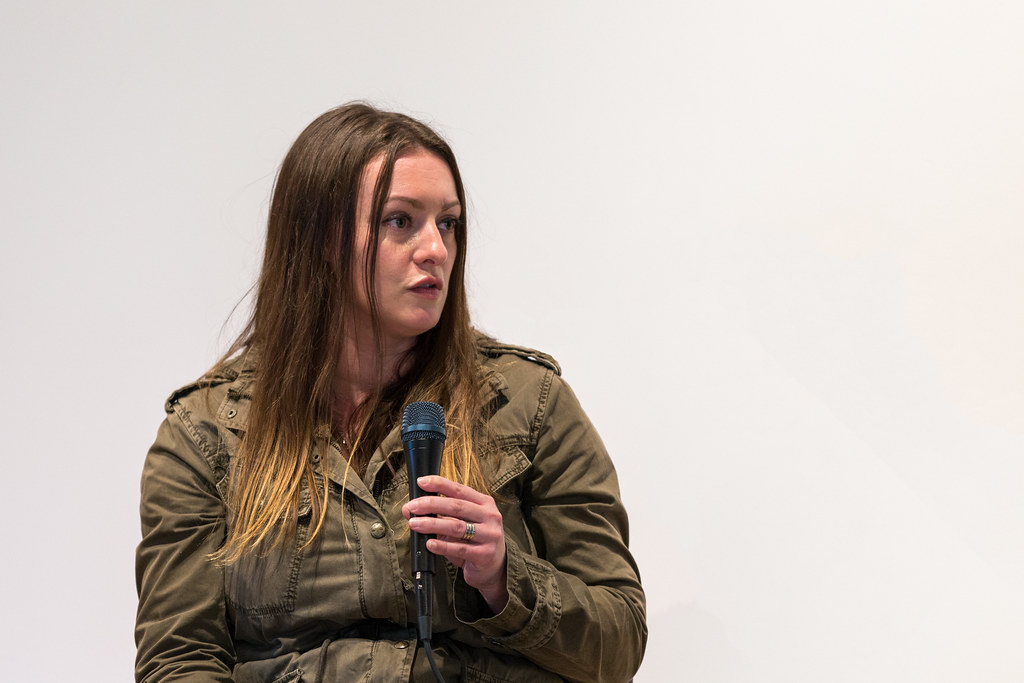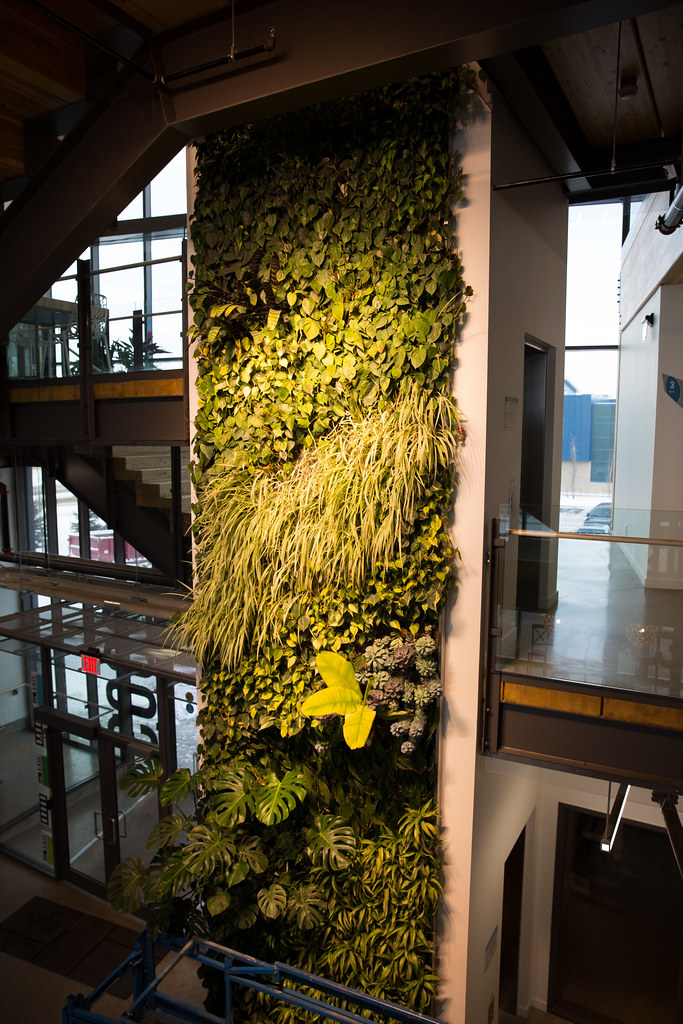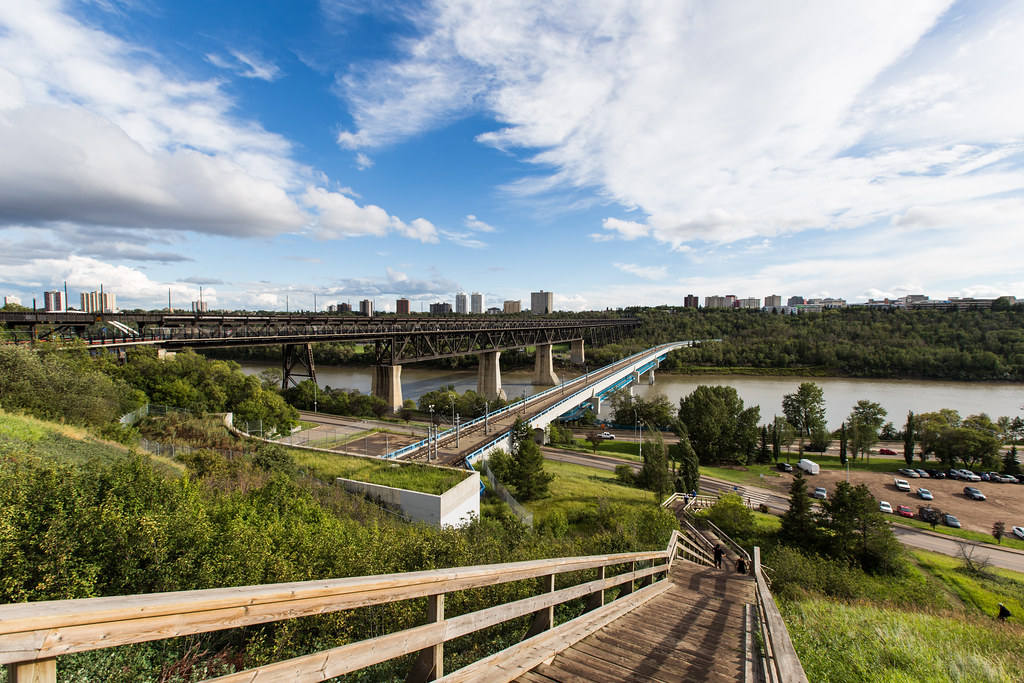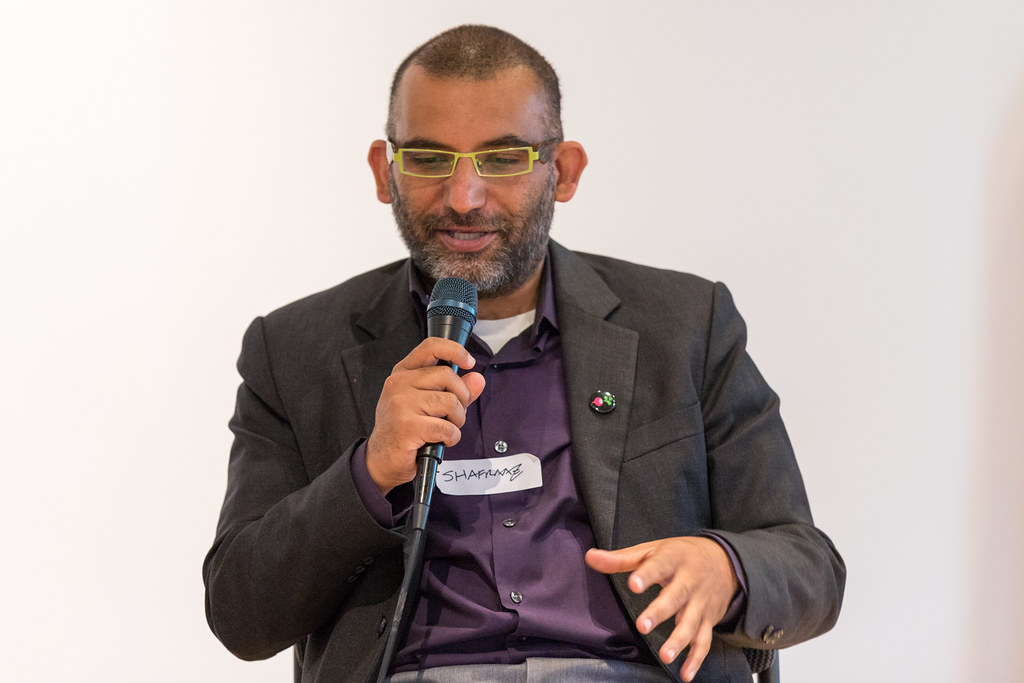Recap: 'Nature-bombing' Jasper Avenue
Part 2 of Taproot Live: What's your urban planning wish?
By Mack Male
Go for a stroll down Edmonton's premier downtown street and take note of what you see: Chances are, it won't be very green.
"I would love to walk down Jasper Avenue and see a living wall that's three storeys high," said Michelle Taylor, who shared her urban planning wish at the Taproot Live event on June 21 at the Sugar Swing Ballroom. She was one of two "dreamers" who shared their wishes out loud that night; see the recap of the first wish, 'High Line' on the High Level, and listen to our full discussion of Michelle's idea here:
Taylor described her vision to "nature-bomb" Jasper Avenue by creating a design competition to introduce more greenery to Edmonton's main street. Imagine yarn bombing, but with plants and art. "What you'd see is a living, breathing street that feels different as you walk down it."

Michelle Taylor at Taproot Live
She was inspired in part by the work of Green over Grey, a Canadian design firm that aims to "create living works of art that purify the air you breathe, make life more sustainable and add some green to the grey of our cities." Living or green walls are about more than just aesthetics for Taylor, however. It's also the effect that a connection to nature has on health and wellness. "A walk through the river valley is good for you in a way that walking down Jasper Avenue isn't," she said before the event.

Living Wall at The Mosaic Centre
Spending time outdoors connecting with nature is not a new idea, but it has received increased attention in recent years. Richard Louv, author of The Nature Principle, coined the term "nature-deficit disorder" which he argues affects "health, spiritual well-being, and many other areas, including [people's] ability to feel ultimately alive." Some research suggests that the positive impact of nature can occur in as little as five minutes.

Edmonton's River Valley
The City of Edmonton has a green network strategy, known as Breathe, which highlights that the vast majority of residential areas are less than 800 metres from publicly accessible land used for "recreation, nature preservation, passive outdoor enjoyment and public gatherings." It also joined the Biophilic Cities Network in 2016 (watch for Michelle's story on the meaning of that commitment next week).
But obstacles have stood in the way of integrating nature in the downtown core, Taylor noted. "There always seemed to be such a contentious relationship between developers, architects, and city planners as to how to incorporate nature into their built environments," she said. That's why she thinks the way to tackle the issue is from the bottom up, with a community-led initiative. She pointed to MADE's Street Furniture Competition as a potential model. "Bringing people together with a variety of expertise and ideas for the city… and seeing creatively what we come up with."

Shafraaz Kaba at Taproot Live
Longevity is one of the issues Taylor identified in bringing her wish to life. While we should take advantage of winter, there's no question that Edmonton's cold weather is a hurdle to overcome, said Shafraaz Kaba, an architect with Manasc Isaac and the expert invited to comment on Taylor's dream at Taproot Live.
"Usually our temperatures freeze right through a pot and kill the roots, so a living wall is a bit of a challenge," said Kaba, who has been involved in creating indoor living walls. Kaba suggested it could work if we "figure out which are the indigenous plants that would be very, very well-suited to be grown on the sides of walls." He also encouraged using shrubs or tall grasses that "actually poke out in the snow or create a winterscape that takes advantage of the vegetation."

Landscape design element at the Meadows Recreation Centre
Another challenge is funding, both for the initial implementation and for ongoing maintenance. Taylor suggested that a program like Edmonton's one-per-cent-for-art policy could have a role, but the downside is it would only apply to new construction projects, not the existing grey street. Kaba suggested crowdfunding a nature-bombing initiative, not unlike the effort to crowdfund the lights on the High Level Bridge.
"There's actually quite a bit of will from the city to do things like this," Taylor said. She thinks that becoming "biodiversity champions" could help to firm up Edmonton's identity and would support existing efforts like the WinterCity Strategy. Kaba added that while there's a recognition of the need to "get the livability up in our city," we usually do that by injecting people into green space. "Maybe we need to have more injections of green space where we have people," he said.
Written by:
Tagged:
